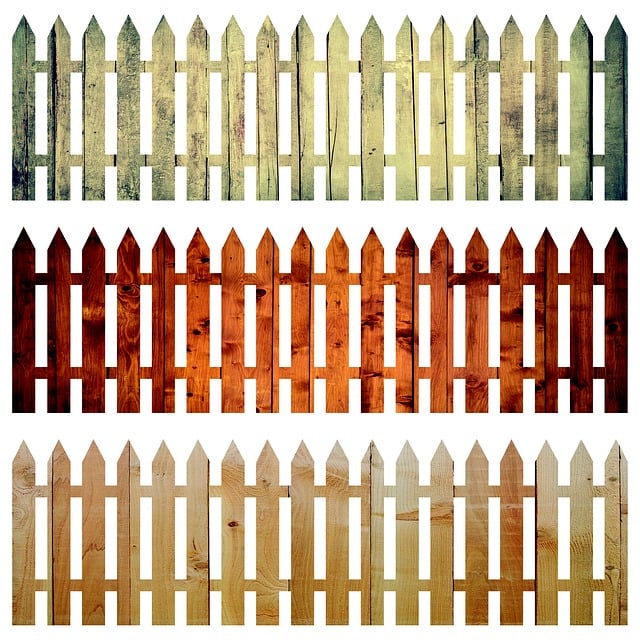New Bedford, MA, boasts a rich architectural heritage reflected in its diverse ornamental fencing styles. This article delves into the historical evolution of fencing in the city, exploring common materials and classic designs ranging from Victorian to Colonial aesthetics. We also examine modern trends, unique design elements, and insights from local experts on installation and maintenance.
- Historical Overview of Fencing in New Bedford
- Common Ornamental Fencing Materials
- Classic Styles: From Victorian to Colonial
- Modern Trends: Metal and Wrought Iron Fusion
- Unique Designs: Adding Personal Touches
- Local Experts: Installation and Maintenance Tips
Historical Overview of Fencing in New Bedford
New Bedford, Massachusetts, boasts a rich history when it comes to fencing styles, reflecting its diverse cultural influences and architectural evolution. Historically, fences served both practical and ornamental purposes in this coastal city. In the early days, wooden palisades and picket fences were common, providing security and defining property boundaries. These simple yet effective barriers were often crafted from local timber, showcasing the region’s craftsmanship.
As New Bedford grew, so did its architectural tastes. The 19th century brought a surge in ornamental fencing styles, influenced by the Victorian era’s love for intricate designs. Iron and wrought-iron fences became prominent, featuring elaborate patterns and scrollwork. These elegant barriers adorned grand estates and public spaces, adding a touch of sophistication to the cityscape. Over time, these historic fencing styles have left an indelible mark on New Bedford’s architectural landscape, contributing to its unique character.
Common Ornamental Fencing Materials
In New Bedford, MA, ornamental fencing often showcases a blend of traditional and modern materials, enhancing both visual appeal and functionality. Common choices include various types of metal, such as aluminum and steel, known for their durability and resistance to weathering. These materials can be crafted into elegant designs, from classic styles with intricate patterns to contemporary geometric shapes.
Additionally, wood remains a popular option for ornamental fencing, offering a warm, natural aesthetic. Pressure-treated and rot-resistant varieties like cedar are frequently used due to their longevity and attractive textures. Vinyl is another versatile material, available in numerous colors and styles, providing low maintenance while still adding a touch of beauty to any property.
Classic Styles: From Victorian to Colonial
In New Bedford, MA, ornamental fencing styles span a rich historical tapestry, reflecting the diverse architectural influences over time. Among the classic styles, Victorian fencing stands out with its elaborate designs, featuring intricate patterns and a variety of ironwork motifs. These fences often include intricate scrollwork, floral etchings, and decorative finials that enhance the overall aesthetic appeal of Victorian-era homes.
Colonial-style fencing also holds a prominent place in the region’s landscape. This style is characterized by simpler, yet elegant designs that pay homage to New England’s colonial past. Typically crafted from wood or iron, Colonial fences feature straight lines, simple geometric patterns, and a more subdued beauty compared to their Victorian counterparts. These classic styles continue to charm residents and visitors alike, contributing to the charming character of New Bedford’s neighborhoods.
Modern Trends: Metal and Wrought Iron Fusion
In recent years, New Bedford has witnessed a blend of traditional and modern aesthetics in ornamental fencing styles. One notable trend is the fusion of metal and wrought iron designs, creating a unique visual appeal that captivates residents and visitors alike. This contemporary approach combines the timeless elegance of wrought iron with modern metallic finishes, resulting in fences that are both visually stunning and durable.
Metal and wrought iron fusion offers a diverse range of possibilities for homeowners looking to enhance their outdoor spaces. From sleek, minimalist lines to intricate, flowing patterns, these fences can be tailored to suit various tastes and architectural styles. The combination also allows for creative customization, enabling property owners to incorporate personal touches and unique designs that reflect their individual personalities.
Unique Designs: Adding Personal Touches
In New Bedford, MA, ornamental fencing styles offer more than just functional barriers; they serve as canvases for unique designs that reflect personal touches and artistic flair. Homeowners can opt for intricate patterns, elegant curves, or playful motifs that complement their architectural style or garden aesthetics. Customization is key here—from intricate scrollwork to nature-inspired elements like leaves and vines—allowing residents to express their creativity.
These personalized fencing designs not only enhance the curb appeal of properties but also provide a sense of individuality. Whether it’s a delicate ironwork pattern or a bold, geometric design, each element contributes to a visually appealing outdoor space. This attention to detail showcases the owner’s personality and invites passersby to appreciate the artistry that goes into these ornamental fences.
Local Experts: Installation and Maintenance Tips
When it comes to ornamental fencing in New Bedford, local experts offer valuable insights for both installation and maintenance. For a long-lasting fence, professionals suggest starting with high-quality materials—from robust posts to elegant pickets—to withstand the region’s climate. Regular cleaning and treatment against rust or decay are essential, especially with our area’s salt air and changing seasons.
Installation tip recommendations include ensuring proper drainage around the fence line to prevent water damage and choosing a design that complements your property’s architecture. Maintenance tricks involve inspecting for loose pickets or posts at least twice a year and promptly addressing any issues to avoid structural damage.
